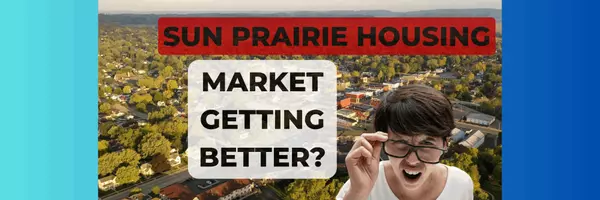Unveiling the Hidden World Beneath: A Soil Test Adventure with Meinholz Excavating and Dane County Sanitary Specialists

 Yesterday, I embarked on an enlightening journey with Meinholz Excavating and the Dane County Sanitary specialists to perform a soil test on a vacant land we’re listing. It was my first experience witnessing this process, and I found it fascinating to delve into the intricacies of topsoil, subsoil, bedrock, and the essential factors that determine the type of septic system suitable for the land—whether it be conventional, at-grade, or a mound system.
Yesterday, I embarked on an enlightening journey with Meinholz Excavating and the Dane County Sanitary specialists to perform a soil test on a vacant land we’re listing. It was my first experience witnessing this process, and I found it fascinating to delve into the intricacies of topsoil, subsoil, bedrock, and the essential factors that determine the type of septic system suitable for the land—whether it be conventional, at-grade, or a mound system.
Orientation and Initial Steps
Our day began with orienting ourselves using the Certified Survey Map (CSM). This step was crucial to understanding the layout and features of the lot. We then examined the proposed site for the house, aiming to identify the most optimal locations that would not interfere with future homeowner plans. This foresight is essential because homeowners might want to add features like a larger driveway, an outbuilding, or even a pool, especially on a larger lot where possibilities are endless.
The First Dig: Front Left of the Lot
We chose our first test spot at the very front left of the lot. Typically, homeowners don’t place large structures in front of their homes, making it a safe starting point. As we dug down about six feet, we encountered smaller rocks. This indicated that we were approaching bedrock—a critical factor because a septic system requires about 3-4 feet for the distribution pipes, gravel, barrier, and backfill.
The backfill, which can be any type of soil, protects the system. If planting grass, it's advisable to use quality topsoil or place topsoil over the ‘crummy’ backfill to ensure a good yard. Below the system, an additional 3-4 feet of good soil is needed to absorb the nutrients and materials from the drain field. At six feet, hitting smaller rocks suggested proximity to bedrock.
 Bedrock, the solid rock beneath surface materials, varies in type and absorption capacity. Our soil evaluator confirmed good soil quality but wanted to dig deeper. At just over seven feet, we unmistakably hit bedrock. The excavator’s hits caused noticeable vibrations, a reminder of bedrock's solid, unyielding nature. With a maximum depth of 88 inches before hitting bedrock, this spot wasn’t ideal for a conventional below-grade system. However, an at-grade or mound system could work, given the soil and clearance needed for absorption below.
Bedrock, the solid rock beneath surface materials, varies in type and absorption capacity. Our soil evaluator confirmed good soil quality but wanted to dig deeper. At just over seven feet, we unmistakably hit bedrock. The excavator’s hits caused noticeable vibrations, a reminder of bedrock's solid, unyielding nature. With a maximum depth of 88 inches before hitting bedrock, this spot wasn’t ideal for a conventional below-grade system. However, an at-grade or mound system could work, given the soil and clearance needed for absorption below.
The Second Dig: Back Left of the Lot
Our next spot was the back left of the lot, slightly lower in elevation than the first. Here, we successfully reached the proper clearance for a conventional system. We then had to decide between a one-cell septic system (a single, very long cell about 180 feet) or a two-cell system (halving the length but doubling the width). The two-cell system was preferable, minimizing future impact on homeowner plans.
The Third Dig: Ensuring System Suitability
To ensure the entire length of the system was appropriate, we dug a third spot. Success! We also unearthed a piece of "dirty granite," a not fully formed granite that breaks down over time. I kept this unique rock for my daughter, who loves collecting rocks.
A Glimpse into the Subterranean World
 Observing the soil layers was intriguing. The topsoil, dark and rich as seen in stores, transitioned to lighter subsoil as we dug deeper. In the first dig, we noticed a rusty coloration near the subsoil’s bottom, explained by groundwater drainage and entrapment between subsoil and bedrock. This process causes the rusty color—a fascinating revelation! We also encountered muddy water, adding to the learning experience.
Observing the soil layers was intriguing. The topsoil, dark and rich as seen in stores, transitioned to lighter subsoil as we dug deeper. In the first dig, we noticed a rusty coloration near the subsoil’s bottom, explained by groundwater drainage and entrapment between subsoil and bedrock. This process causes the rusty color—a fascinating revelation! We also encountered muddy water, adding to the learning experience.
Conclusion
Witnessing the soil test process was an eye-opening experience, providing a deeper appreciation for what lies beneath our feet and the considerations involved in establishing a septic system. It’s easy to take these systems for granted, but understanding the effort and expertise required gives a new perspective on the infrastructure supporting our daily lives.
Categories
- All Blogs (201)
- All Things Waunakee (7)
- Benefits (7)
- Communities (12)
- Decorating (7)
- Deployment (2)
- Easements (3)
- Energy Efficiency (4)
- First-Time Homebuyers (22)
- Home Inspection (1)
- Home Maintenance (1)
- Home Selling (19)
- Home Value (13)
- Homes for Heroes (8)
- Housing Assitance (7)
- Interest Rates (5)
- Market Trends (62)
- VA Loans (5)
- Veterans (8)
- Waunakee Housing Market (2)
- Well, Water, Septic Systems (4)
Recent Posts










GET MORE INFORMATION

